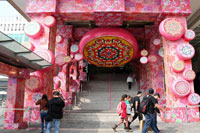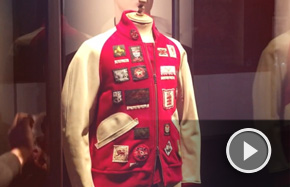Meet Barbie's much older Chinese sisters
 |
|
Traditional silk dolls have been undergoing a resurgence in popularity among the country's youngsters. Zhao Bing / For China Daily |
Long-legged, fair-haired and dressed in the most fashionable clothes, the Barbie doll has become an icon among children's toys in the West. But for more than 1,000 years, a doll that swept China has sustained just as much allure for youngsters.
Juanren, or silk dolls, first appeared in the Han Dynasty (206 BC-AD 220), and remained popular for centuries.
They were designed with detailed facial expressions and could be found inside their own special cabinets in most Chinese homes.
They were made of thin silk, gauze and damask silk, and depicted both men and women from folktales, operas and traditional dramas. In many cases, designers dressed them in the style of a particular ethnic group.
"Ancient Chinese fabric toys are very closely connected to silk figurines," China Folklore Society researcher Zhong Bingtian says. "The evolution and development of silk and knitted goods has gone hand-in-hand."
Juanren have undergone many phases of development. In the early Song Dynasty (960-1279), designers began to create clothes for the dolls, made from fine brocade.
 |
In the Yuan Dynasty (1271-1368), they became an increasingly popular toy. And in the Ming Dynasty (1368-1644), the figurines started taking the forms of gods and goddesses.
"It was a folk tradition to make silk dolls to give to younger generations as a gift during the Dragon Boat Festival in many areas of southern China," Zhong says.
"And in the north, colorful silk and elegant satin were used to make the God of Felicity as a typical birthday present."
After the Qing Dynasty (1644-1911), juanren fell from popularity as China was consumed by wars and social unrest.
It was not until the mid-1950s that the art form was resurrected, after the government of the People's Republic of China was invited to attend an international toy fair in India.






















